2002 - Volume #26, Issue #4, Page #42
[ Sample Stories From This Issue | List of All Stories In This Issue | Print this story
| Read this issue]
Cheap Water Purification Systems Uses Car Battery And Table Salt
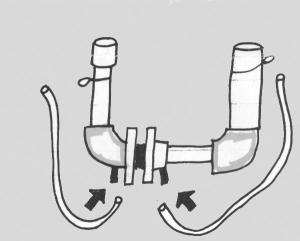 |
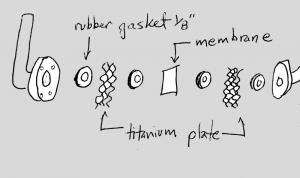 |
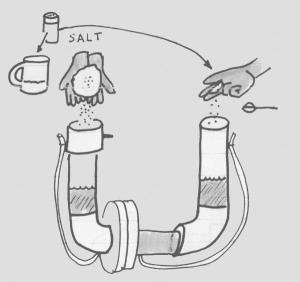 |
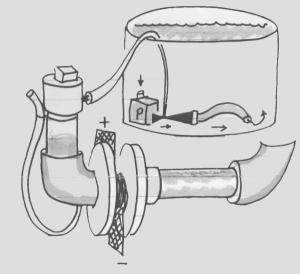 |
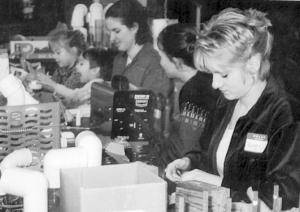 |
Says consulting engineer Bob Malcomb, Deputy, Indiana: "This simple water purification method uses salt and a low voltage electric current to produce chlorine gas and ozone. It will kill even Cryptosporidium and other viruses that many municipal water treatment plants can't touch."
Malcomb says the process was developed by a Christian missionary who worked in poor Third World countries where clean drinking water is almost impossible to find.
"He brought it to me to help produce it. He's shipped more than 600 of them overseas," Malcomb says.
The low-tech water purifier is made of 2 in. PVC pipe, put together in a U shape, with electrodes inserted in the lower portion of the pipe. A semi-permeable membrane between the electrodes separates the water, which has a higher salt concentration on one side.
Salt water is made by mixing regular table salt with a small amount of previously purified water.
To make the system work, electrical current is passed through the water by attaching a car battery to the electrodes using jumper cables. The current passing through the water produces a chemical reaction that releases small amounts of chlorine gas and ozone. Both gases rise into one end of the U-shaped pipe. A 12-volt DC fish tank aeration pump (the kind used to keep air and water circulating in bait tanks on fishing boats) pulls the gases out of the enclosed PVC pipe to the bottom of the tank of water being treated.
When hooked to a fully charged car battery, this system will purify about 55 gal. a minute. "We also have a solar panel and a wind generator that do a good job," Malcomb says.
While this water purification system was developed for third-world countries, it's ideal for treating water of unknown quality in remote locations on farms or for cabins and vacation homes.
You'll need a chlorine tester (like used for a swimming pool) to monitor the chlorine level in the water. "The goal is for the water to have 1 to 4 parts of chlorine per million," Malcomb says. "At 20 ppm, chlorine can cause cancer. And even dissolved in water, ozone can be dangerous. You need to wait at least 45 minutes after treating water to give the ozone time to dissipate before it's used for drinking."
"We're working on a way to automate the system, so it will shut down when the chlorine gets to a pre-set level in the water. With this and a permanent electrical connection to a transformer, simple wind generator or solar panel, you could purify water all day long," he says.
System maintenance is simple, too. "Every once in awhile, you need to open the tube, dump out the remaining water, rinse out any residue and refill it with fresh water and salt," he says.
"It's by far the cheapest method for purifying water that I've ever found," he adds. The price for the device is $350. This includes all the equipment and instructions to make the system work except the battery and jumper cables.
Malcomb is working with Purdue agricultural engineers to develop a filtering system to also remove soil particles from water.
Contact: FARM SHOW Followup, Bob Malcomb, 7649 N. Terry Road, Deputy, Ind. 47230 (ph 812 794-2875; E-mail: bobmalcomb@juno.com).

Click here to download page story appeared in.

Click here to read entire issue
To read the rest of this story, download this issue below or click here to register with your account number.




